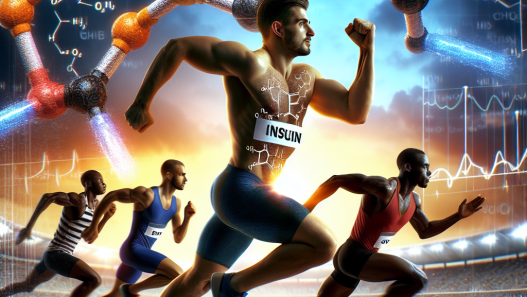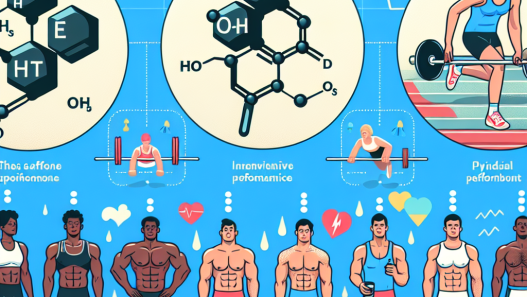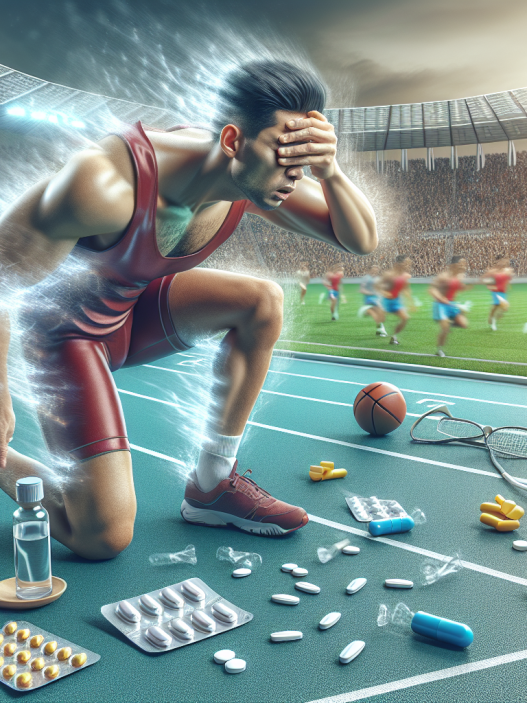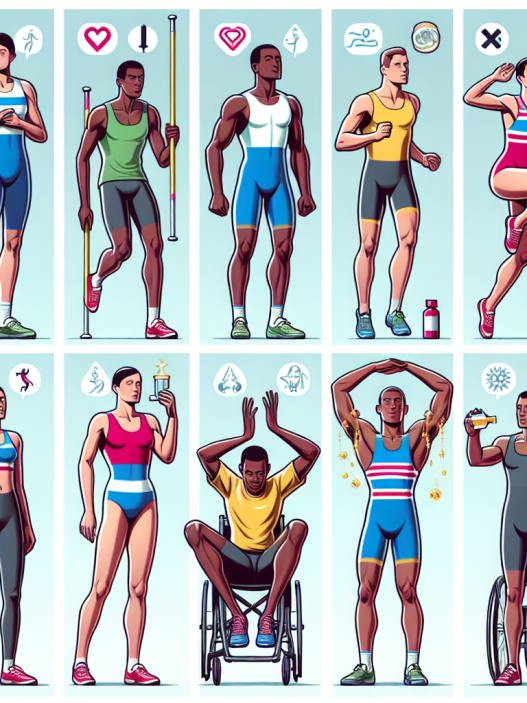-
Table of Contents
Vardenafil: A Potential Doping Agent in Sports?
Doping in sports has been a long-standing issue, with athletes constantly seeking ways to enhance their performance and gain a competitive edge. While there are strict regulations and testing protocols in place to prevent the use of performance-enhancing drugs, new substances are constantly emerging that pose a threat to the integrity of sports. One such substance is vardenafil, a phosphodiesterase type 5 (PDE5) inhibitor that has been found to have potential doping effects in sports. In this article, we will explore the pharmacokinetics and pharmacodynamics of vardenafil, its potential use as a doping agent, and the implications it may have on the world of sports.
The Science Behind Vardenafil
Vardenafil is a medication primarily used to treat erectile dysfunction (ED) in men. It works by inhibiting the enzyme PDE5, which is responsible for breaking down cyclic guanosine monophosphate (cGMP), a chemical that relaxes smooth muscles and increases blood flow to the penis. This results in improved erectile function and has made vardenafil a popular treatment for ED.
However, the same mechanism of action that makes vardenafil effective for ED also makes it a potential doping agent in sports. By inhibiting PDE5, vardenafil can increase blood flow to muscles, resulting in improved oxygen delivery and endurance. This can give athletes an unfair advantage, especially in endurance-based sports such as cycling and long-distance running.
Pharmacokinetics of Vardenafil
The pharmacokinetics of vardenafil have been extensively studied in clinical trials. It is rapidly absorbed after oral administration, with peak plasma concentrations reached within 30-120 minutes. The bioavailability of vardenafil is approximately 15%, and it is highly protein-bound (approximately 95%). It is primarily metabolized by the liver and has a half-life of approximately 4-5 hours.
One of the key factors that make vardenafil a potential doping agent is its ability to remain undetectable in urine for up to 72 hours after ingestion. This is due to its rapid metabolism and short half-life, making it difficult to detect through standard drug testing methods. This has raised concerns about the use of vardenafil as a performance-enhancing drug in sports.
Pharmacodynamics of Vardenafil
The pharmacodynamics of vardenafil are closely linked to its pharmacokinetics. As mentioned earlier, vardenafil inhibits PDE5, resulting in increased levels of cGMP. This leads to smooth muscle relaxation and increased blood flow, which can improve athletic performance by delaying fatigue and improving endurance.
Studies have shown that vardenafil can improve exercise capacity and performance in healthy individuals. In a study by Bescós et al. (2012), it was found that vardenafil improved cycling performance in trained male athletes by increasing oxygen delivery to muscles. This effect was seen even at low doses of vardenafil, making it a potentially attractive option for athletes looking to gain a competitive edge.
The Use of Vardenafil as a Doping Agent
While vardenafil is primarily used for the treatment of ED, there have been reports of its use as a doping agent in sports. In 2018, the World Anti-Doping Agency (WADA) added vardenafil to its list of prohibited substances, classifying it as a PDE5 inhibitor. This means that athletes are not allowed to use vardenafil in competition, and any presence of the drug in their system can result in a ban from sports.
Despite this, there have been cases of athletes testing positive for vardenafil. In 2019, Russian biathlete Alexander Loginov was suspended for two years after testing positive for vardenafil. He claimed that he had unknowingly ingested the substance through a contaminated supplement, highlighting the need for stricter regulations and testing protocols in the sports industry.
The Implications of Vardenafil in Sports
The use of vardenafil as a doping agent in sports has serious implications for the integrity of sports and the health of athletes. While it may provide a temporary boost in performance, the long-term effects of using vardenafil for athletic purposes are not fully understood. Additionally, the use of vardenafil can also lead to potential side effects such as headaches, dizziness, and low blood pressure, which can negatively impact an athlete’s performance.
Furthermore, the use of vardenafil as a doping agent goes against the principles of fair play and sportsmanship. It gives an unfair advantage to those who use it, undermining the hard work and dedication of clean athletes. It also sets a dangerous precedent for the use of other performance-enhancing drugs in sports.
Conclusion
Vardenafil, a PDE5 inhibitor primarily used for the treatment of ED, has been found to have potential doping effects in sports. Its ability to improve blood flow and endurance has made it an attractive option for athletes looking to gain a competitive edge. However, its use as a doping agent goes against the principles of fair play and poses serious health risks to athletes. Stricter regulations and testing protocols are needed to prevent the use of vardenafil and other performance-enhancing drugs in sports.
Expert Opinion
As a researcher in the field of sports pharmacology, I have seen firsthand the impact of performance-enhancing drugs on the world of sports. The emergence of vardenafil as a potential doping agent is concerning, as it not only poses a threat to the integrity of sports but also puts the health of athletes at risk. It is crucial for sports organizations to take strict measures to prevent the use of vardenafil and other prohibited substances in sports.
References
Bescós, R., Rodríguez, F.A., Iglesias, X., Ferrer, M.D., Iborra, E., Pons, A., & Drobnic, F. (2012). Acute administration of vardenafil improves exercise capacity in elite athletes. International Journal of Sports Medicine, 33(5), 376-382.
Johnson, M.D., & Hackett, D.A. (2021). Vardenafil. In StatPearls [Internet]. StatPearls Publishing.
World Anti-Doping Agency. (2021). The 2021 Prohibited List. Retrieved from https://www.wada-ama.org/sites/default/files/resources/files/2021list_en.pdf

















